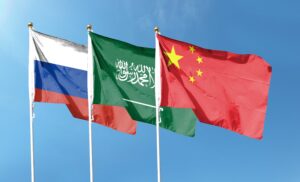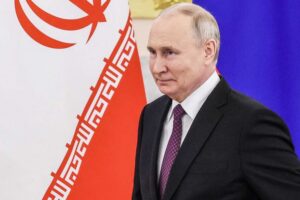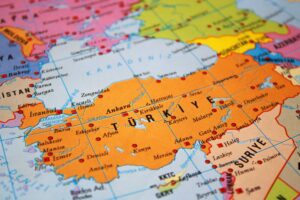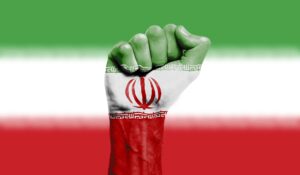In spite of rumors that Russia can be excluded from OPEC+, the current format of cooperation between Moscow and other oil producers may still survive and continue to exist beyond September 2022 when the current deal expires, although the chances to see it happen are decreasing.[i]
The June meeting of OPEC+ had certain intrigue. Shortly before the gathering took place, media outlets started to discuss rumors on the potential suspension of Russia’s participation in the OPEC+ configuration under the pretext of its inability to maintain the designated production levels with the United Arab Emirates and Saudi Arabia having to pump extra oil to replace it. By doing this, the cartel could reach two goals: mitigate the rise of oil prices and respond to the pressure of Western powers (first of all the US) to deliver more oil to the market. The organization opted for a compromise: it did not exclude Russia from the OPEC+ deal, but the production quota was increased slightly above the expected level.[ii]
Too early to forget about Russia
Even with its declining production capacities, Russia still remains an important player in the oil market whose role in Asia, a key consumer market for the oil producers of the Persian Gulf as well, is increasing. Moscow managed to redirect its oil exports from Europe to Asia. Putting aside its initial fears and hesitations, India turned out to be the main buyer of extra volumes of Russian oil. From almost zero barrels a day in February, its imports rose to 0.9mbpd in May, although in previous years, this indicator did not exceed 0.2mbpd on average. China shortly followed the example of New Delhi. It has not only been traditional buyers of Russian hydrocarbons, such as independent oil refining companies (or so-called tea-pods), who showed interest in purchasing extra supplies, but also major Chinese firms affiliated with the government, despite the latter vowing not to pursue business opportunities with the Russians due to the threat of sanctions.[iii]
Russian producers provide an unprecedented discount to their customers in order to compensate for the possible risks and costs associated with the purchase of politically tainted oil.
Several factors played in favor of the growth of Russian oil supplies to Asia. The primary advantage is the unprecedented discount that Russian producers provide to their customers in order to compensate for the possible risks and costs associated with the purchase of politically tainted oil. According to various estimates, the volume of this discount reaches $25–$35 per barrel, which attracts the same refiners, who have already raised their profitability margin significantly, as well as countries that are experiencing economic difficulties with purchasing oil at the official, higher market prices.[iv] Russia’s partial loss of the petrochemical market may also benefit oil trade: Russian oil may be in demand as a feedstock in countries that have tried to replace Russia or increase their exports in the fuel market and in other petrochemical products.[v] Thirdly, Moscow should be grateful to Tehran, which previously developed a number of techniques to circumvent sanctions with its Asian consumers for the purchase of Iranian oil. These maneuvers were predominantly applied by India and China when adjusting their oil trade with Russia to the new political realities. At the same time, the volumes available, their quality, and, in some cases, the shorter distance for delivering supplies made Russian hydrocarbons more attractive for Asian consumers than those of Iran. Finally, Moscow is ready to pay the costs associated with the supply of oil to Asian markets and quickly learns from its mistakes. It implies not only the willingness to provide discounts, but also to take on both risks and costs associated with paying for ship insurance, owning their own tanker fleet, using low-tonnage carriers, as well as trading oil “from tanker to tanker”. Ultimately, today’s high oil prices allow Moscow to retain profits.
Russia’s challenge of OPEC+
However, the current market conditions also have their victims, which include OPEC+ countries. Iran was the first to suffer. Russia challenged Iran’s position in the market of sanctioned oil.[vi] As already noted, Russian hydrocarbons appear to have a number of undeniable advantages for China, including the fact that current restrictions on Russian oil are not as strict as the ones on Iranian oil. This applies to petrochemical products in general. For example, Russian LPG became a significant competitor to Iranian LPG in Turkey, Pakistan and Afghanistan.[vii]
In India, Russian oil has challenged the positions of the UAE, the KSA and Iraq. By May 2022, all three of these countries lost a substantial share of the market to Moscow. Russian exports may impact Saudi interests in the Chinese market, although so far, the KSA managed to grow its market share. According to some experts, Oman will be the main victim of the increased influx of Russian oil to China.[viii]
All these factors force OPEC+ countries to reconsider their pricing policies. In April, Iraq was the first to cut its oil prices. In May, other producers in the Gulf followed its example. Interestingly, the price of Russian petrochemical products turned out to be more influential than other market factors (such as the possibility of gradual easing of quarantine restrictions in China) that, in theory, should have pushed up oil prices.[ix]
Moscow will remain an important player in the oil market.
The most important lesson for OPEC+ was that it is still too early to disregard Russia’s role in the market. The war unleashed by President Vladimir Putin launched a restructuring process in the energy markets. Companies based in East and Southeast Asia, such as Shandong Port International Trade Group or Livna Shipping Ltd., are replacing previous traders of Russian oil that were mainly based in Europe.[x] Oil producers from the Gulf are clearly unhappy with the fact that political factors created a serious imbalance in oil export flows.[xi] Producers like Iran are trying to find a way of coping with Russia via bilateral consultations, hoping to divide the market for sanctioned oil. Other actors like Saudi Arabia and its partners can presumably expect to work with Moscow within the framework of OPEC+. None of them, however, should doubt that Moscow, at least for some time, will remain an important player in the oil market.
Just business
Russian oil will have no place in Europe and Gulf countries will gradually take its place by regulating their pricing policy.
Under these circumstances, OPEC+ cannot be expected to harbor pro-Russian sentiments, and its June decision not to suspend Russia’s participation in the organization was informed by other considerations. To better understand the OPEC+ position, it is necessary to look at the situation from the perspective of its key members: the Arab producers of the Gulf. Firstly, even without the provision of assistance to Europe to strengthen its energy security, Putin’s war in Ukraine presents a rare opportunity for OPEC+ countries to enrich themselves. The war once again shifted the attention of the international community from the security of demand towards security of supply by making Western countries see Gulf oil producers as a potential replacement for Russia in the European energy market and beyond. High oil prices are not only replenishing the financial reserves of the Arab Gulf countries, but have a positive impact on their macroeconomic growth indicators and increase the effectiveness of their soft-power instruments. International oil companies (IOC) that leave Russia again find it appealing to invest in the Middle East again. It also makes no sense to declare a trade war against Russia for oil markets given the general mood of Europeans to diversify supplies. In any case, Russian oil will have no place in Europe and Gulf countries will gradually take its place by regulating their pricing policy.
Secondly, the economic consequences of the Russian invasion of Ukraine have not yet affected the Arab monarchies of the Persian Gulf much. More than the consequences of the Ukrainian war, Arab oil-producing countries are concerned about the impact of COVID on China’s economy, and a low growth rate of the world economy. All this has a negative effect on oil markets and requires maximum coherence within OPEC+, even with Russia’s potentially weakening role. Moreover, the current situation helps oil producers to draw the attention of non-OPEC players to the issue of industrial underinvestment. This is one of the key policies that Arab Gulf oil producers are promoting now in response to the EU’s requests to increase production volumes.
The Ukrainian war is as far away for Gulf elites as the Syrian, Yemeni or Afghan conflicts are for the majority of Europeans.
Finally, the Ukrainian conflict lies beyond the vital interests of oil-producing countries of the Gulf. There are no cultural and historical bonds that would allow them to feel attached to the Ukrainians’ troubles. The Ukrainian war is as far away for Gulf elites as the Syrian, Yemeni or Afghan conflicts are for the majority of Europeans. Under such circumstances, the Western need for Arab oil is pragmatically perceived as a bargaining chip. For instance, when openly ignoring US requests to raise production volumes, the Saudi leadership was returning the favor to the Biden administration for the last few difficult years of relations with the US. Moreover, the Ukrainian conflict is seen by the Arabs through the prism of the Syrian conflict, where Moscow managed to slowly grind the resistance of Assad’s opponents and largely leave the battlefield behind. Moscow’s slow but steady progress in Donbass makes them draw parallels between the two cases. Consequently, it makes no sense for Arab Gulf countries to openly interfere in the conflict on the West’s side, nor to spoil relations with Russia with continued uncertainty about the reliability of the US as a partner.
The coin stands on the rib
On the one hand, the unwillingness of Gulf producers to cooperate with oil consumers in order to slow down or even reverse the increase of oil prices makes the latter seek out alternative ways to change the situation in their favor. The range of potential responses is wide and it varies from the search for alternative suppliers outside of the Gulf to the adoption of legislations that negatively affect OPEC+. On the other hand, the increasing importance of the issue of the security of regional oil and gas infrastructure can be exploited. The impact of the Ukrainian crisis on the domestic energy and economic security of Gulf states is not as positive as in the case of external opportunities. The economies of Gulf countries have different levels of tolerance towards rising fuel prices and higher inflation rates. Yet, even the least vulnerable economies such as those of Saudi Arabia or the UAE start to feel the impact. High incomes from oil slow down the growth of non-oil sectors and make the implementation of diversification programs less appealing. If sustained for the longer term, this could potentially make Gulf players reconsider their market strategies.
Under these circumstances, the future of OPEC+ is not determined. The stability of the oil market remains an unresolved issue and thus, keeping the organization together is the only way to deal with it. Russia’s production capacities are falling but the country remains a wild card in the hydrocarbon market. While market conditions do not require strict regulation of output at the moment, there is a chance that the deal can still make it beyond September 2022, with its format and production quotas likely to shift towards looser and less binding obligations.
[i] OPEC Weighs Suspending Russia From Oil-Production Deal – WSJ
[ii] OPEC+ alliance boosts oil production as energy prices soar | AP News
[iii] Russia Ships Record Volumes To India, China, & Italy | ME… (mees.com)
[iv] Russia Offers Oil to India at Big Discount to Pre-War Price – Bloomberg
Russia oil price discount: China senses an opportunity to stock up on the cheap | Fortune
[v] Ukraine War Sanctions: Europe’s Ban on Russian Oil Has to Be Realistic – Bloomberg
[vi] More Russian oil going east squeezes Iranian crude sales to China | Oil and Gas News | Al Jazeera
[vii] Iran-Russia friendship turns sour over gas rivalry – Nikkei Asia
[viii] Middle East crude grades feel the pressure as Russian Urals head to Asia | S&P Global Commodity Insights (spglobal.com)
[ix] Oil Prices Under Pressure As China Considers Russian Crude | OilPrice.com
[x] China quietly increases purchases of low-priced Russian oil – CNA
(channelnewsasia.com)
[xi] وزير الطاقة الإماراتي: الأزمة السياسية سبب فوضى أسواق النفط والغاز – الطاقة (attaqa.net)
















